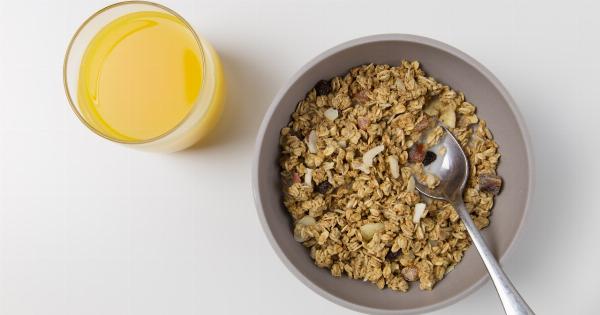As parents, it is important to ensure that our little ones are consuming a balanced and healthy diet. One of the challenges that new parents may face is introducing complementary foods into an infant’s diet.
There are specific methods and guidelines to be followed when introducing these new foods. In this article, we will discuss the proper introduction method for complementary foods in an infant’s diet.
When to Start Complementary Foods?
The World Health Organization (WHO) recommends exclusive breastfeeding for the first six months of an infant’s life. Breast milk provides all the necessary nutrients and protection needed during this time.
After the first six months, complementary foods should gradually be introduced alongside breast milk. Breast milk alone can no longer meet all the infant’s nutritional needs. Therefore, it is necessary to introduce complementary foods that will provide the necessary nutrients to ensure growth and development.
Choosing Complementary Foods
The complementary foods chosen should be nutrient-dense and should contain the necessary nutrients for an infant’s growth and development. It is important to choose whole foods that are not too salty or sweet.
Foods should also be easily digested, and the texture should be appropriate for an infant. Examples of nutrient-dense foods include pureed fruits and vegetables, meat, fish, dairy products, and whole grains.
How to Introduce Complementary Foods?
When introducing complementary foods, it is essential to go slow and start with small amounts. A common approach is to introduce one food at a time, starting with iron-fortified infant cereal mixed with breast milk.
Once the infant gets used to the cereal, pureed fruits and vegetables can be introduced. It is important to give the infant time to get used to the new taste and texture of the food before introducing another complementary food. This approach helps to identify any food allergies or intolerances that the infant may have.
Feeding Technique
Feeding an infant complementary foods should be a comfortable and enjoyable experience for both parent and child. It is essential to sit the infant in an upright position, with the head and neck supported.
The infant’s mouth should not be forced open, and the food should be offered on a spoon. The spoon should be inserted into the side of the infant’s mouth, not too far back, to avoid choking. The infant should be allowed to close their mouth around the spoon and swallow the food at their own pace.
Frequency of Complementary Foods
When starting complementary foods, it is important to note that breast milk should still be the primary source of nutrition. The recommended frequency of complementary foods varies based on the infant’s age.
Infants aged six to eight months can be fed complementary foods two to three times a day. Infants aged nine to eleven months can be fed complementary foods three to four times a day. Infants aged twelve months and above can be fed complementary foods four times a day, along with snacks.
Foods to Avoid
There are certain foods that should be avoided when introducing complementary foods. Honey should not be given to infants under one year of age, as it can cause botulism.
Cow’s milk should not be given as a primary source of nutrition until the infant is twelve months or older. Foods that have a high risk of causing allergies, such as peanuts, tree nuts, shellfish, and fish, should be introduced gradually.
Foods that are high in sugar and salt should also be avoided, as they can affect an infant’s kidney function and lead to obesity.
Conclusion
The introduction of complementary foods is an important milestone in an infant’s life. It is essential to ensure that the complementary foods are chosen carefully, and the right method is employed in introducing them.
By following the guidelines discussed in this article, parents can give their infants a healthy and balanced diet that promotes growth and development.
























